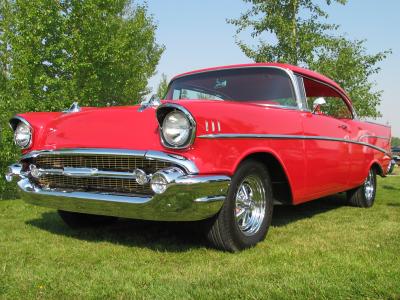Hydraulic systems are systems that move pressurized liquids through confined spaces, such as pipes and tubes. Many modern machines and other types of equipment utilize hydraulic systems, such as cars. However, you can also find them existing in nature.

Hydraulic vehicle braking systems came in to prominence among automobile manufacturers during the 1930s. They are multiple piston systems, which means they transmit force between two or more pistons. According to PDH Engineer, when you step up on a hydraulic brake pedal, the force compresses the first piston, known as the input piston, which in turn pushes break fluid through hoses and tubing. The pressure from the fluid causes two other pistons, known as the output pistons, to push outward. These pistons are attached to brake shoes, which apply friction to the walls of the brake drums, slowing the rotation of the wheels.

Workers use hydraulic jacks to elevate extremely heavy objects, such as cars, building supplies and even entire buildings. According to Phys Link, these jacks utilize a basic hydraulic principle, known as Pascal’s Principle, which the French scientist Blaise Pascal developed in the 17th century. The principle states that if you apply force to a liquid inside of a small cylinder, you will be able to generate a greater force from that same pressure in a larger cylinder. So when you push down on the pump or lever of a hydraulic jack, you are squeezing liquid down into a small cylinder, and pumping it into a larger one via tubing. The resulting pressure is great enough to lift incredibly heavy objects, even though the relative force you need to apply is small.

According to London’s Science Museum, the American dentist Basil Wilkerson invented the adjustable hydraulic chair in 1877, which many people, particularly dentists and barbers, still utilize today. The chairs work just like hydraulic pumps. In order to elevate one, and its seated occupant, you need to push on a lever, which in turn compresses liquid in a small cylinder. The larger cylinder, in this instance, is attached to the bottom of the seat. So the force you generate pushes the chair upward.

The human cardiovascular system, as well as the circulatory systems of many other organisms, are also good examples of hydraulic systems. In this type of natural hydraulic system, the heart serves as a central pump, which sends out oxygen to the body using a pressurized fluid, blood. This fluid travels through confined spaces: arteries and veins.
